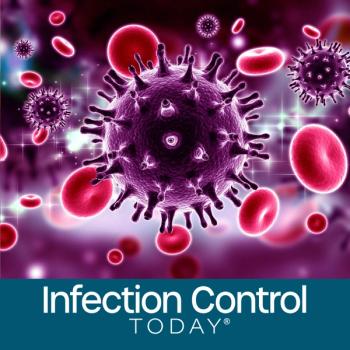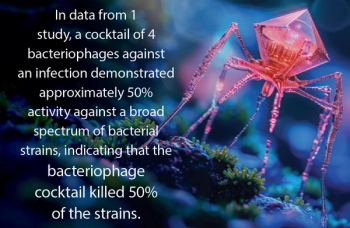
- Infection Control Today, March 2022, (Vol. 26, No. 2)
- Volume 26
- Issue 2
Flu or Omicron? Diagnosis Must be Done Quickly
The highly transmissible and dominant Omicron variant of COVID-19 places added pressure on infection preventionists and other clinicians to determine just what they’re dealing with.
As the Omicron variant of COVID-19 surges to
Being able to interpret early signs of disease is vital toward taking necessary steps to recovery and mitigation—receiving laboratory or at-home test result confirmation, referring to a clinician, taking necessary treatment, and possibly isolating from at-risk persons. While limited national testing availability and stunted turnaround time has plagued the US response to COVID-19 outbreaks since March 2020, massive data collection has given experts a more refined understanding of what is early signs of COVID-19, versus possibly the flu or otherwise.
Here is
Signs and Symptoms of COVID-19 and Influenza
While both diseases can present asymptomatically, the respiratory viruses share about a dozen common symptoms:
- Change in or loss of smell or taste
- Chills
- Congestion
- Cough
- Diarrhea
- Fatigue
- Fever
- Headache
- Muscle pain or body aches
- Shortness of breath
- Sore throat
- Vomiting
Persons with the flu often feel some or all of the above symptoms—with change in or loss of smell or taste being more frequently reported among patients with COVID-19. Young children with the flu are more susceptible to diarrhea than older patients.
Relative to the common cold, these symptoms occur abruptly in infected flu patients, with the below frequency:
- Chills: Fairly common
- Congestion: Sometimes
- Cough: Common
- Fatigue: Usual
- Fever: Common for 3-4 days
- Headache: Common
- Sore throat: Sometimes
Separately, COVID-19 cases include signs indicating need for emergent care that may sometimes differentiate from early flu signs and symptoms, including:
- Trouble breathing
- Persistent chest pain or pressure
- New confusion
- Inability to wake or stay awake
- Pale, gray, or blue-colored skin, lips, or nail beds
Time From Exposure to Infection
Both COVID-19 and flu can become apparent or symptomatic as soon as 1 day post-infection. However, COVID-19 symptoms have frequently presented later in patients than symptoms of the flu—a difference of 2 to 14 days versus 1 to 4 days post-infection, respectively.
However, experts have observed that the highly transmissible and dominant Omicron variant of SARS-CoV-2 has been associated with expedited time from infection to presenting symptoms, and therefore, risk of spreading disease. This further stresses the need for identifying COVID-19 versus flu cases.
Duration of Illness
Flu is often associated with a recovery time anywhere between a few days to 2 weeks, notwithstanding severe cases or development of complications including sinus infections, pneumonia, myocarditis, encephalitis, myositis, organ failure, sepsis or more. Patients with the flu are also at greater risk of secondary bacterial infections than those with COVID-19, according to the CDC.
COVID-19 illness duration, unfortunately, is an interpretation still being researched. Cases of “long COVID” have been observed to last weeks to months following infection, regardless of patients’ disease severity or symptoms. Patients additionally face risk of complications including blood clots in the veins and arteries of the lungs, heart, legs, or brain, and development of multisystem inflammatory syndrome (MIS), any of which could warrant hospitalization and continued care.
Duration of contagious flu spread can begin as early as a full day before any symptom onset, and can last from 3 to 7 days for most patients, dependent on their age and health—older patients, infants, and those with weakened immune systems may be contagious for longer than a week.
COVID-19 can be spread 2 days prior to any symptom onset, and patients remain contagious for ≥10 days after apparent symptoms and/or a positive test result, per CDC—regardless of asymptomatic status. Those with severe disease and/or weakened immune systems may be contagious for ≥20 days.
This article was originally published on
Articles in this issue
over 3 years ago
Diversity Can Be Best Ally for Infection Preventionistsover 3 years ago
Bug of the Month: Trust Me, I Pose No Threat to You at Allalmost 4 years ago
When COVID Turns 2: Infection Preventionists Take Stockalmost 4 years ago
Long COVID Will Linger Even After the Pandemic Leavesalmost 4 years ago
Infection Control in Outpatient Settings: Old Challenges, New Realitiesalmost 4 years ago
Make Personal Protective Equipment Fit Sterile Processingalmost 4 years ago
Infection Preventionists Swamped with Questions During COVID-19 in 2020almost 4 years ago
COVID-19 Reinfections in Early Stage of Pandemic Examinedalmost 4 years ago
Mask Fit Testing Experiment Uncovers Different Levels of ProtectionNewsletter
Stay prepared and protected with Infection Control Today's newsletter, delivering essential updates, best practices, and expert insights for infection preventionists.






